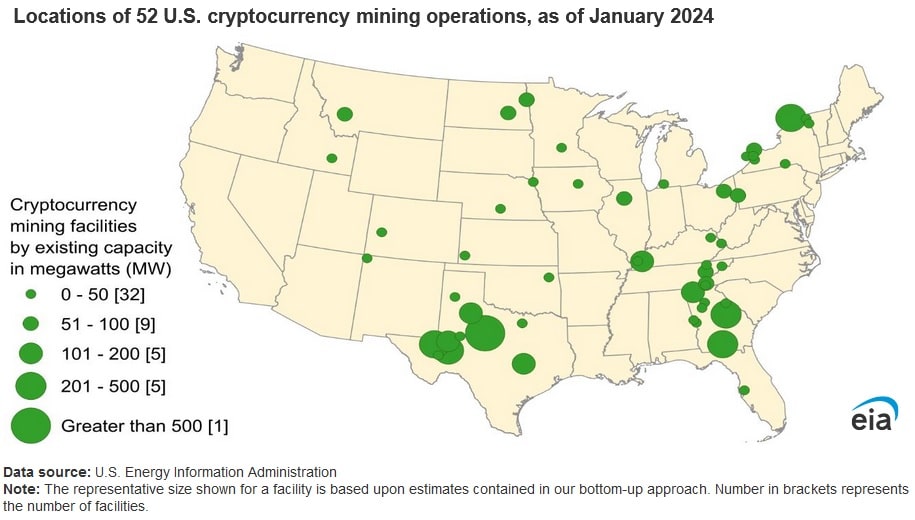Electricity Demand for U.S. Cryptocurrency Operations Continues to Increase: EIA

Electricity usage related to U.S. cryptocurrency mining operations in the U.S. has increased significantly over the last few years, according to the U.S. Energy Information Administration. Early estimates from the agency report that yearly electricity consumption due to cryptocurrency mining represents from 0.6 percent to 2.3 percent of total U.S. electricity usage.
The increase in energy consumption has been of interest to policymakers and grid planners who are worried about the effect of U.S. cryptocurrency mining operations on wholesale electricity prices, reliability and additional carbon emissions. Moreover, interested stakeholders remain concerned about cryptocurrency mining operations due to their inert nature. For example, it can be hard to track cryptocurrency mining activity, since mining assets can be moved swiftly to locations with lower power prices.
The agency has employed two approaches to estimating the impact of U.S. cryptocurrency mining operations on U.S. electricity consumption. The first approach, encompasses data from the Cambridge Centre of Alternative Finance, which keeps an index that predicts global and U.S. electricity usage from cryptocurrency activities. The second approach involves the agency collecting data relating to the location of individual cryptocurrency mining operations and estimating the energy consumption for each specific facility.
The first approach uses the Cambridge Bitcoin Electricity Consumption Index (CBECI) published by the Cambridge Centre of Alternative Finance to estimate electricity consumption from operations mining for Bitcoin and Ethereum. The agency uses this data and estimates the Bitcoin related energy consumption in the U.S. The CBECI estimated that the U.S. accounted for 38 percent of the total global share of Bitcoin mining during January 2022. Based on this assumption, the agency estimates power consumption from Bitcoin mining based across the U.S. to range between 25 terawatt hours (TWh) to 91 TWh, which equates to 0.6 percent to 2.3 percent of all U.S. electricity demand in 2023.
Using the second approach, the agency identifies a total of 137 U.S. cryptocurrency mining facilities. The agency collects details for each facility, which includes the maximum electricity capacity required to run the mining rigs. Out of the 137 facilities acknowledged, the agency identifies 101 of those facilities to have maximum electricity usage, which the agency forecast to be 10,275 megawatts (MW), which equates to be 2.3 percent of average annual electricity consumption in the U.S.
EnerKnol Pulses like this one are powered by the EnerKnol Platform—the first comprehensive database for real-time energy policy tracking. Sign up for a free trial below for access to key regulatory data and deep industry insights across the energy spectrum.
ACCESS FREE TRIAL